Kinkakuji, Kyoto's Golden Pavilion: History, Access, Tickets, and Highlights

Kinkakuji, the Temple of the Golden Pavilion, is a must-visit landmark in Kyoto. This article provides a detailed introduction to its history, access, tickets, highlights, and nearby attractions. We've also included suggested itineraries for a day trip.
Kinkakuji Temple Guide
1. Introduction to Kinkakuji Temple (Golden Pavilion)
2. Access to Kinkakuji Temple
3. Opening Hours and Admission to Kinkakuji Temple
4. Highlights Inside Kinkakuji Temple
5. Best Seasons to Visit Kinkakuji Temple
6. Nearby Attractions and Itinerary Around Kinkakuji Temple
Introduction to Kinkakuji Temple

Kinkakuji Temple, formally known as Rokuonji Temple, is one of the sub-temples of the prestigious Shokokuji Temple. It is particularly renowned for its Golden Pavilion.
Approximately 600 years ago, the noble Kitayama West Palace, located in Kyoto's northern hills, fell from power following a regime change. The estate and gardens were subsequently transferred to the Muromachi Shogunate, a military government.
In 1397, the third shogun, Ashikaga Yoshimitsu (1358-1408), commenced the construction of the Kitayama Palace and the Golden Pavilion. Following its completion, Yoshimitsu spent his final years here before his passing. In accordance with his wishes, the estate was converted into a Zen temple. The renowned monk Muso Soseki was invited to establish the temple, which was named "Rokuonji" after Yoshimitsu's posthumous name, "Rokuon-in-dono."
In the wake of Yoshimitsu's passing, apart from the Golden Pavilion, the living quarters were either dismantled and donated to Nanzenji or Kenninji temples. Despite enduring the upheavals of the late Muromachi and early Sengoku periods, the Golden Pavilion remained unscathed.
During the Edo period (1603-1868), it was rebuilt under the auspices of the Nishi Honganji Temple at the behest of the Tokugawa shogunate. With the onset of the Meiji era, substantial landholdings were reclaimed due to the anti-Buddhist movements, severely impacting the temple's financial resources. Consequently, in 1894, it was opened to the public, and an admission fee was introduced to sustain operations.
Access to Kinkakuji Temple
| Kyoto City Bus |
Take bus routes 12, 59, 205, or M1 and alight at Kinkakuji-michi bus stop. |
| JR Kyoto Station |
Take bus route 205 and alight at Kinkakuji-michi bus stop. |
| Shokoku-ji Temple |
From Karasuma-Imadegawa, take bus route 59 and alight at Kinkakuji-michi bus stop. From Doshisha-mae, take bus route 59 and alight at Kinkakuji-michi bus stop. |
| Ginkakuji Temple |
At Ginkakuji Michi, take bus route 204 and alight at Kinkakuji Michi. |
Opening Hours and Admission of Kinkakuji Temple
| Opening Hours | 9:00 - 17:00 |
| Adult Admission (High School and above) | 500 yen |
| Child Admission (Elementary and Middle School Students) | 300 yen |
Highlights Inside Kinkakuji Temple
What are the must-see attractions within Kinkakuji Temple? In addition to the Golden Pavilion, what else is there to see? We have compiled all of the highlights for you!
The Golden Pavilion

The most renowned feature within the Rokuonji grounds is the golden-hued Golden Pavilion.
This three-story pavilion exhibits a blend of architectural styles. The first floor adopts the design of a nobleman's residence from the Heian period, representing the prosperity of the Kitayama culture at that time.
The second floor, known as Choondo, reflects the style of a warrior's residence from the Kamakura period (1185-1333), bearing the character of the original landlord, the Nishi Honganji family. The third floor embodies a Zen temple's Kukkyocho, with pillars and ceilings adorned in gold leaf, housing sacred relics.
The Golden Pavilion embodies both the court and warrior cultures, standing as a representative construction of the Muromachi period (1333-1572). While once designated a national treasure, a devastating fire in 1950 razed the pavilion and the wooden images it housed, including statues of Ashikaga Yoshimitsu and Kannon, resulting in their removal as national treasures.
The sole survivor was the phoenix on the rooftop, which was spared due to being temporarily relocated for restoration at that time. As the only remaining original item from the pavilion's construction era, it is now closely guarded and not accessible to the public. Following fundraising efforts for reconstruction, the pavilion was restored to its original appearance from 600 years ago, and the phoenix on the rooftop is now in its third generation.
Adjacent to the mirror-like Kyokochi Pond, which resembles the Pure Land Paradise from Buddhism, visitors can see the sparkling Golden Pavilion reflected in the water. It is a breathtaking sight.
The Main Gate
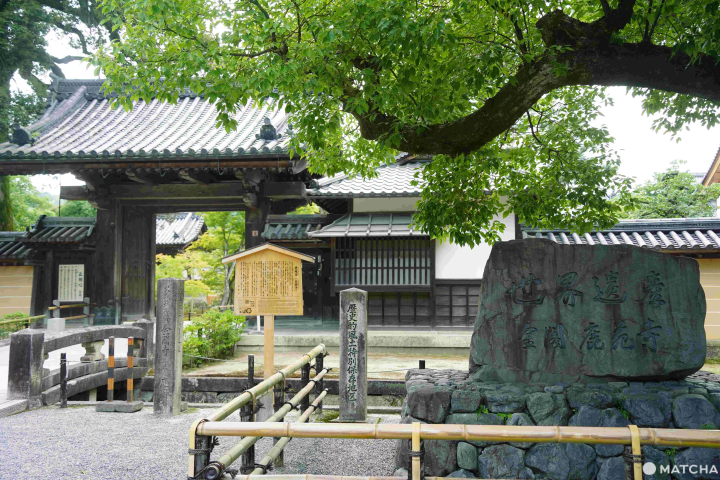
The main gate at the entrance of Kinkaku-ji Temple features a stone monument indicating its status as a UNESCO World Heritage site. The earthen wall next to the main gate has five lines, a characteristic found in imperial residences and temples. Depending on the specification, there are three to five lines. Kinkakuji Temple, with its five lines, signifies the highest standard for a temple.
Rikushu-no-Matsu (Land Boat Pine Tree)
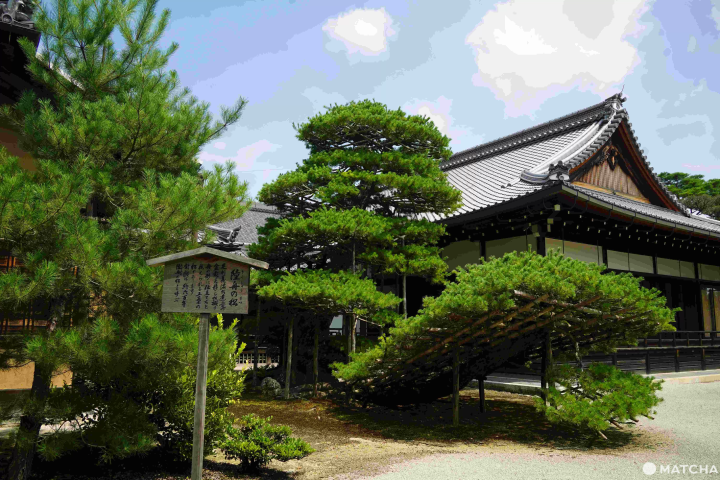
The Rikushu-no-Matsu at Kinkakuji Temple is one of Kyoto's three famous pine trees. It is said to have been transplanted from a bonsai planted by Ashikaga Yoshimitsu. It has grown into a vigorous and impressive tree after over 600 years.
Sekkatei Teahouse

Sekkatei is a thatched roof building that serves as a tea house located on the north side of the Kyokochi Pond. It provides an ideal spot to view the lingering twilight glow of the Kinkaku-ji Temple.
Fudo Hall

The Fudo Hall within the precincts has two designated important cultural properties: the Fudo Myoo statues. As the oldest building within the precincts, it is also a notable point of interest.
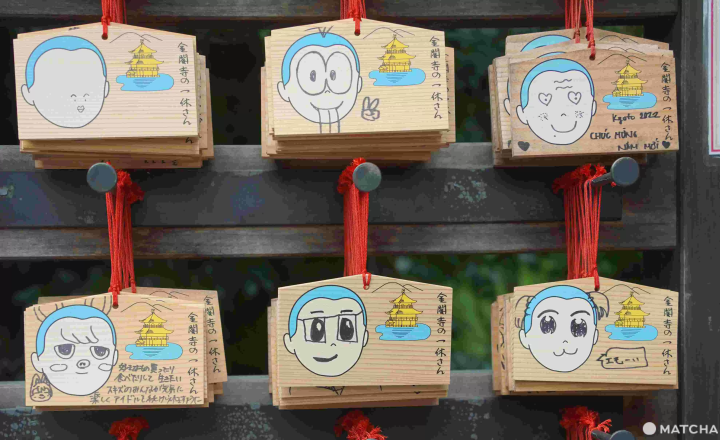
Near the Fudo Hall, you can find ema (wooden votive tablets) bearing an image of Ikkyu Sojun. The cartoon character "Ikkyu Sojun" in the anime Ikkyu-san depicts Shogun Ashikaga Yoshimitsu. The temple can frequently be seen in the opening credits and animation, hence inspiring the design of this votive pillar.
Hakujacho (White Snake Mound)

After passing Sekkatei, you'll encounter this five-storied pagoda, known as the Hakujacho, dedicated to the white snake envoy of Benzaiten. It is said to guard the original Kitayama noble residence, and the adjacent small pond is believed to be a relic of the Kitayama family. Benzaiten is a water deity and one of the Seven Lucky Gods. According to tradition, if you toss a coin into the bowl, Benzaiten will help grant your wish!
Best Seasons to Visit Kinkakuji Temple

Kinkakuji Temple offers different scenic views with the changing seasons. However, the most recommended times are autumn, when the temple comes alive with red foliage, and the potential to witness a snow-covered Kinkakuji in winter.
Nearby Attractions and Itinerary Tips for Kinkakuji Temple
Many Kyoto attractions can be visited alongside the Kinkakuji Temple. Here are some recommended spots that can be included in your itinerary to experience the beauty of Kyoto's shrines and temples.
Ryoanji Temple
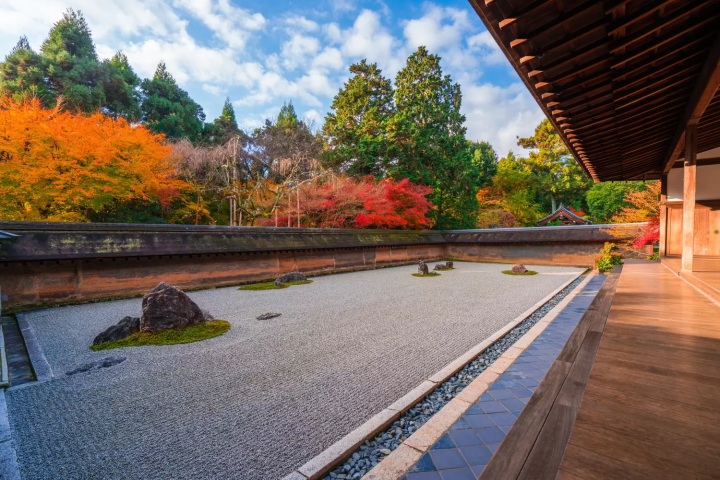
Ryoanji Temple is one of Kyoto's World Heritage sites, distinguished by its stone and sand garden (karesansui) with a design based on the golden ratio. To enhance the visual imagery, the depth of the stone garden is intentionally designed to have a slight incline. Additionally, the stone garden holds other design nuances that captivate visitors.
Ryoanji Temple
Address: 13 Ryoanji Goryonoshitacho, Ukyo ward, Kyoto
Official Website: http://www.ryoanji.jp/smph/eng/
Ninnaji Temple
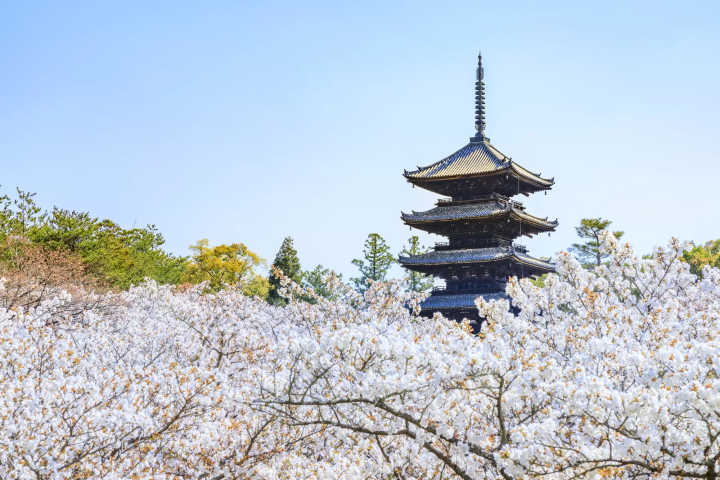
Established in 888, Ninnaji Temple has a history spanning 1,200 years. Emperor Uda once became a monk and established the Omuro school of the Shingon sect of Buddhism. Hence, it's also known as Omuro Palace.
The temple grounds feature a variety of cherry blossoms, most notably the late-blooming Omuro-zakura, making it a renowned cherry blossom viewing spot since the Edo period.
Ninnaji Temple
Address: 33 Omuro-oarai-cho, Ukyo ward, Kyoto
Official Website: https://ninnaji.jp/en/
Kitano Tenmangu Shrine
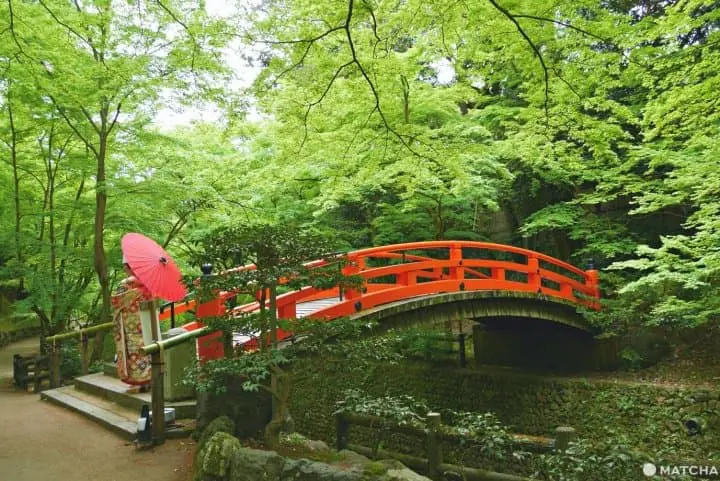
With a history spanning a millennium, Kitano Tenmangu Shrine primarily enshrines Sugawara no Michizane, the guardian deity of learning. It serves as the head shrine among over 12,000 Tenjin shrines nationwide, attracting numerous students who come to pray for success in their exams.
The main hall, with over 400 years of history, is a kaleidoscope of colors and is designated as a national treasure. The shrine's maple garden, known for green maples in early summer and bright red leaves in late autumn, is a renowned maple-viewing spot in Kyoto.
The plum garden at Kitano Tenmangu is also famous and visited by thousands of people in February, during the plum blossom season.
Kitano Tenmangu Shrine
Address: Kamigyo ward, Bakurocho, Kyoto
Official Website: https://kitanotenmangu.or.jp/en/
One-Day and Half-Day Itineraries for Kinkaku-i Temple
Kinkakuji Temple is near Kitano Tenmangu Shrine, Ryoanji Temple, and Ninnaji Temple.
If time allows, it is recommended to arrange a visit to Kinkakuji, Ryoanji, and Ninnaji—creating a "World Heritage Day" itinerary.
Alternatively, those on a tighter schedule can opt for a half-day trip by combining Kinakuji and Kitano Tenmangu Shrine. Alternatively, you could include it as a stopover during your visit to Arashiyama.
Recommended One-Day Itinerary: Kinkakuji Temple → Ryoanji Temple → Ninnaji Temple (World Heritage Day)
Recommended Half-Day Itinerary: Kitano Tenmangu Shrine → Kinkakuji Temple
Enjoy Your Visit to Kinkakuji, the Golden Pavilion
Kinkakuji Temple ranks among the top tourist destinations in Kyoto and is a must-visit for newcomers. Aside from capturing its impressive facade, gaining some historical insight before admiring the temple will enhance your appreciation and leave a more profound impression.
Hotels near Kinkakuji Temple (Golden Pavilion)
Pictures courtesy of PIXTA
Read also
I used to live in Japan and managed to conquer 78 out of the 100 famous castles and 12 existing castle towers in 8 years. As a history enthusiast, I also have a passion for baseball and Japanese dramas, which have driven me to visit all 47 prefectures. I hope to convey not only the scenery of Japan but also more of its culture and way of life.



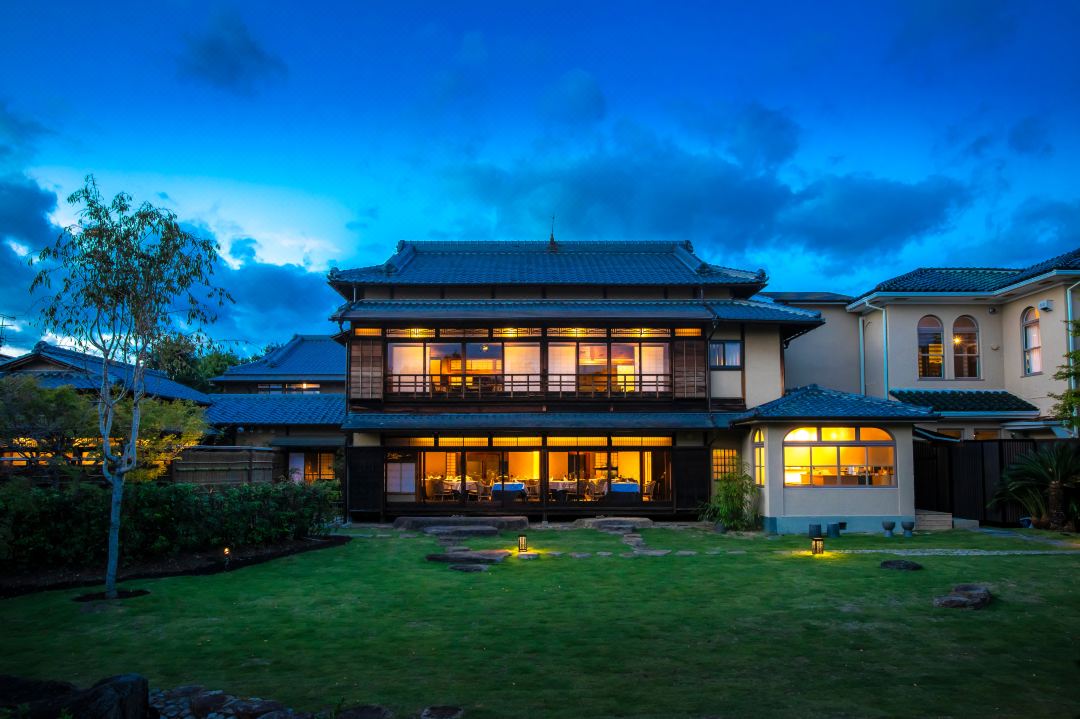








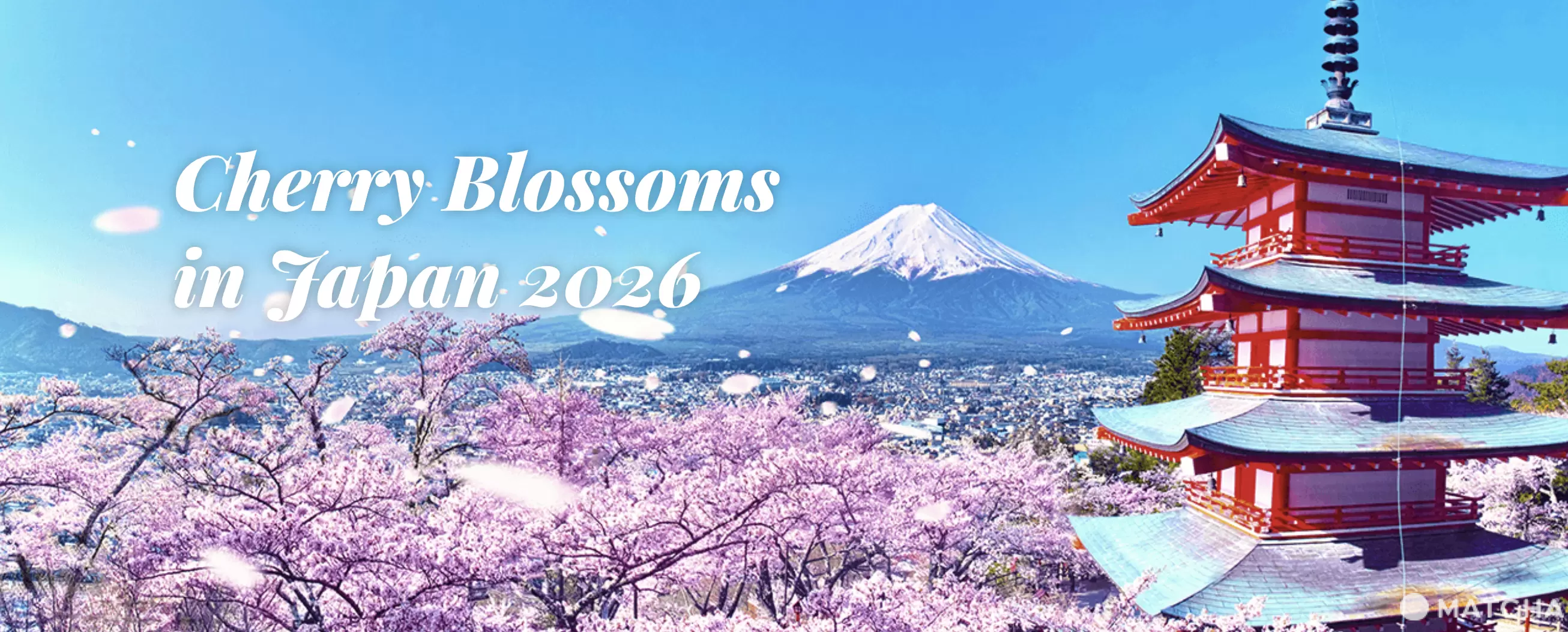





























![[2026] Top 5 Strawberry Picking Spots in Tokushima, Naruto| Farms and Access Guide for January to May](https://resources.matcha-jp.com/resize/720x2000/2025/03/06-227165.webp)
![[Yamanashi/ Hokuto City] 4 Hot New Spots Opening in 2026](https://resources.matcha-jp.com/resize/720x2000/2025/12/12-252747.webp)


